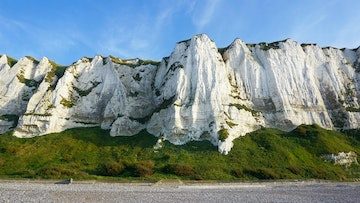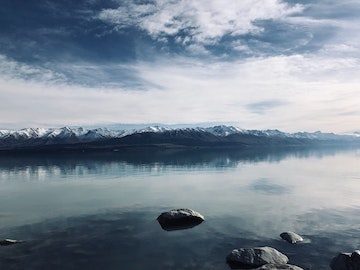Carbonates are composed of carbon and oxygen (CO3) and form the basis of many sedimentary rocks as well as freshwater and marine organisms. The most common variety is calcium carbonate (CaCO3) — the primary constituent of corals, shells and limestone (Schneider et al. 2000) — often found in combination with other elements including magnesium [CaMg(CO3)2] and iron (FeCO3). Carbonates are widely used in geology, paleoclimatology and paleontology as the oxygen and carbon therein are foundational for radiocarbon dating and stable isotope analyses (Bradley, 1999).
The radiocarbon (14C) signature provides a signal of age from present to approx. 40,000 years ago while the variation in stable oxygen (δ18O) and carbon (δ13C) can provide details of changing hydroclimate conditions and greenhouse gas concentrations. However, it is important to distinguish between carbonates formed within marine vs. freshwater environments as it can impact the interpretation of both radioactive and stable isotopes.

A primary assumption of radiocarbon dating is that the radiocarbon within the sample in question was at equilibrium with the atmosphere during its lifespan. For carbonates residing in freshwater and ocean environments, this assumption does not hold true – both experience the “reservoir effect”.
Lakes and oceans take up atmospheric 14C in the surface waters, but also receive other 14C inputs from weathering, groundwater and runoff (Alves et al. 2018). This effect means that the fresh and ocean water are out of equilibrium with the atmosphere. As a result, 14C analyses of carbonates from both lakes and oceans must undergo calibration via a reservoir correction before an accurate date can be estimated.
Within lake systems, the reservoir correction can be calculated locally based on the volume to surface ratio of the lake as well as the depth of the samples within the lake system. Corrections for marine samples is more complicated due to the impacts of larger-scale systems including ocean circulation and mixing of water masses, however, significant work has been undertaken to establish regional marine calibrations available on the Marine20 Database (Heaton et al. 2020). In many cases, 14C dating is used in combination with Uranium-Thorium (U-Th) dating to reduce uncertainties (Paterne et al. 2004).

Carbon isotopes measured in freshwater system carbonates are useful in the reconstruction of dissolved inorganic carbon, which strongly reflects lake productivity, whereas oxygen isotopes provide evidence of the balance between precipitation and evaporation in the lake system. However, the stable isotope signatures of freshwater carbonates are tightly tied to temperature variability — thus, thermal changes must be constrained to fine-tune results.
Carbon isotopes measured in marine system carbonates are often used to identify variability in oceanic CO2 — tied to ocean acidification. This is based on the fact that as atmospheric CO2 dissolves in the ocean, the water becomes more acidic (pH < 7) resulting in the dissolution of calcium carbonate organisms. On the other hand, oxygen isotopes measured in marine carbonates are useful in determining ocean temperature changes through time due to the known relationship between δ18O and relative temperature (higher δ18O represent colder conditions).
References:
Image Credits: Pexels
Cliffs of Dover – Photo by Bernd Feurich
Lake – Photo by Anthony Waymouth
For inquiries on stable isotope analysis and radiocarbon dating costs, please contact us using this form.

You might also be interested in these free webinars available on demand:
Isotopes & Dating in Marine Environments (δ18O, δ13C, B, Pb, Sr, Nd, Hf)
Radiocarbon (14C) in Terrestrial & Marine Environments
U-Th Dating vs Carbon-14 Dating
This entry was posted on Thursday, June 29th, 2023 and is filed under Beta Analytic Updates, Radiocarbon Dating, Stable Isotope Analysis .